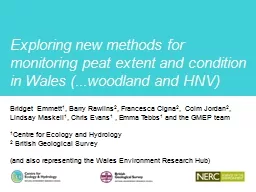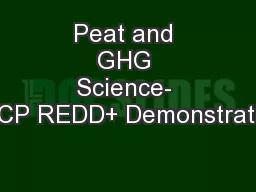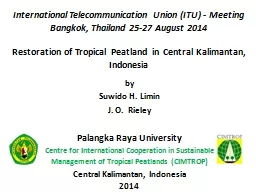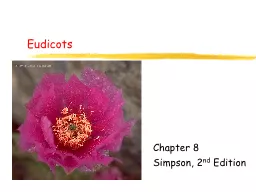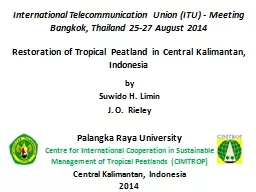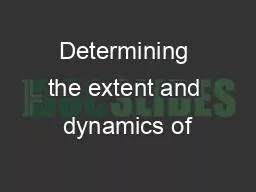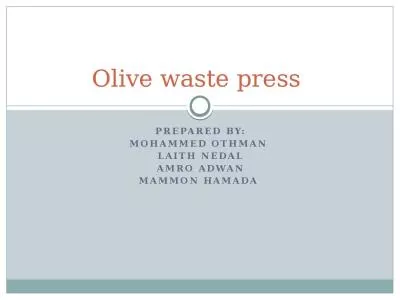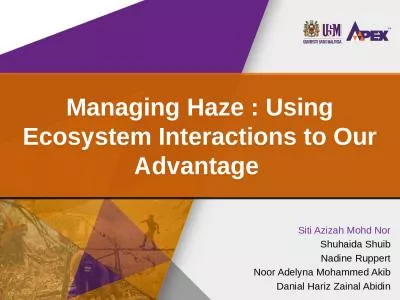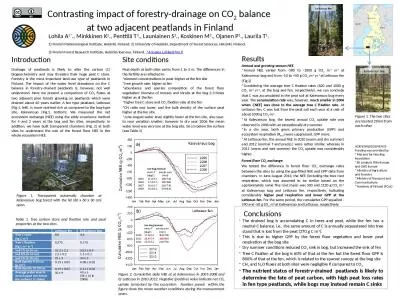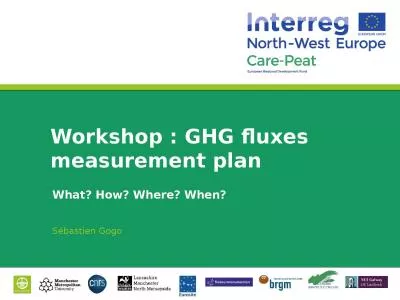PPT-Exploring new methods for monitoring peat extent and condit
Author : ellena-manuel | Published Date : 2016-06-14
Wales woodland and HNV Bridget Emmett 1 Barry Rawlins 2 Francesca Cigna 2 Colm Jordan 2 Lindsay Maskell 1 Chris Evans 1 Emma Tebbs 1 and the GMEP team 1 Centre
Presentation Embed Code
Download Presentation
Download Presentation The PPT/PDF document "Exploring new methods for monitoring pea..." is the property of its rightful owner. Permission is granted to download and print the materials on this website for personal, non-commercial use only, and to display it on your personal computer provided you do not modify the materials and that you retain all copyright notices contained in the materials. By downloading content from our website, you accept the terms of this agreement.
Exploring new methods for monitoring peat extent and condit: Transcript
Download Rules Of Document
"Exploring new methods for monitoring peat extent and condit"The content belongs to its owner. You may download and print it for personal use, without modification, and keep all copyright notices. By downloading, you agree to these terms.
Related Documents

